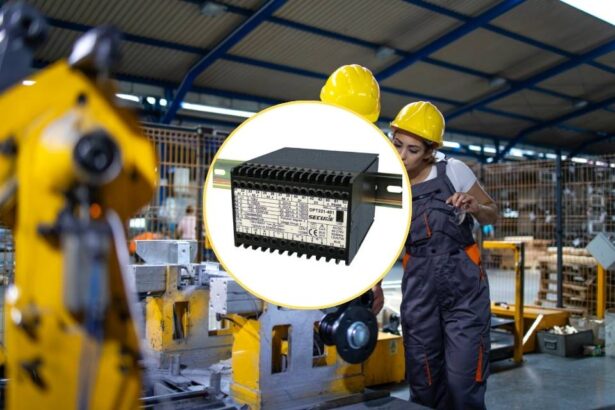Introduction
When I started researching the impact of IoT on industrial automation, especially from an Indian perspective, I realized how transformative this technology is. I’ve gathered and condensed the latest insights for industrial product manufacturers and sellers to help you understand how IoT is reshaping your world. This post aims to explain the opportunities, challenges, and future potential in a clear, first-hand, relatable way.
Understanding IoT and Industrial Automation
IoT, or the Internet of Things, connects everyday devices to the internet, allowing them to collect and exchange data. In industrial automation, this means machinery, tools, and systems can “talk” to each other without human intervention.
Imagine a factory where machines alert operators about maintenance needs before a breakdown happens or a supply chain system that tracks shipments in real time—that’s IoT at work.
Industrial automation has been around for decades, but with IoT, we are moving into the “smart” era where decision-making is increasingly data-driven and proactive.
How IoT is Transforming Global Industries
During my research, it became clear that IoT has revolutionized global industries in several ways:
- Predictive Maintenance: Sensors predict equipment failure before it happens, saving costs.
- Real-Time Monitoring: Machines share performance data continuously.
- Smart Supply Chains: End-to-end visibility of goods from warehouse to delivery.
- Remote Management: Operations can be monitored and controlled remotely.
From manufacturing in Germany to agriculture in the USA, IoT is the core of “Industry 4.0.”
IoT Revolution in Indian Industries
In India, the IoT revolution is well underway, though uniquely shaped by local challenges and opportunities. Here’s what I found:
- Manufacturing: Companies like Tata Steel and Maruti Suzuki have smart factories where machines and production lines are connected with IoT.
- Logistics: Fleet management companies use IoT to track goods and optimize delivery routes.
- Agriculture: IoT helps farmers with precision irrigation and crop monitoring.
- Energy: Utilities deploy smart meters and manage grids using IoT sensors.
IoT adoption is being fueled by initiatives like “Make in India” and “Digital India,” providing a supportive environment for industries ready to modernize.
Real-Life Examples of IoT Adoption in India
Here are some real-world examples that impressed me during my research:
| Company/Industry | IoT Application | Impact |
|---|---|---|
| Tata Steel | Smart factory with real-time monitoring | Increased efficiency and reduced downtime |
| Maruti Suzuki | IoT-enabled production lines | Predictive maintenance, optimized productivity |
| Stellapps | IoT for dairy farming | Enhanced milk quality, better farmer payments |
| AWL India (Logistics) | Fleet and warehouse IoT solutions | Faster deliveries, better inventory control |
| Tata Power-DDL | Smart meters with NB-IoT | Accurate billing, real-time energy management |
Each of these stories shows that IoT is not a distant dream—it’s happening right now in Indian industries.
Key Benefits for Manufacturers and Sellers
Here’s why industrial product manufacturers and sellers should care:
- Cost Reduction: Avoid breakdowns, optimize resource usage, save on operational expenses.
- Better Quality Control: Consistent product quality with real-time feedback.
- Enhanced Customer Satisfaction: Faster deliveries, fewer delays, transparent services.
- Data-Driven Insights: Make smarter business decisions based on actual usage data.
- Competitive Edge: Stay ahead of traditional competitors by offering “smart” solutions.
IoT is not just an upgrade—it’s becoming a basic expectation in the market.
Challenges in Implementing IoT
Of course, it’s not all smooth sailing. I noted some significant challenges that manufacturers and sellers should be aware of:
- Connectivity Issues: Especially in rural areas, internet access can still be patchy.
- Cybersecurity Risks: More connections mean more vulnerabilities if not managed well.
- High Initial Costs: Small and medium enterprises may find it expensive initially.
- Skill Gap: Lack of trained personnel to manage IoT systems.
Addressing these proactively through proper planning, partnerships, and gradual scaling can make a big difference.
Conclusion
After thoroughly researching this topic, I can confidently say: IoT is reshaping industrial automation in India, and it’s just the beginning. For industrial product manufacturers and sellers, embracing IoT is no longer optional—it’s essential for future growth and survival.
Whether it’s predictive maintenance, smart logistics, precision farming, or energy optimization, the opportunities are vast. If you are in the industrial sector, now is the perfect time to explore IoT solutions, understand how they can fit into your offerings, and stay ahead in this rapidly evolving market.
Let’s move towards a smarter, more efficient industrial India—one connected device at a time!






